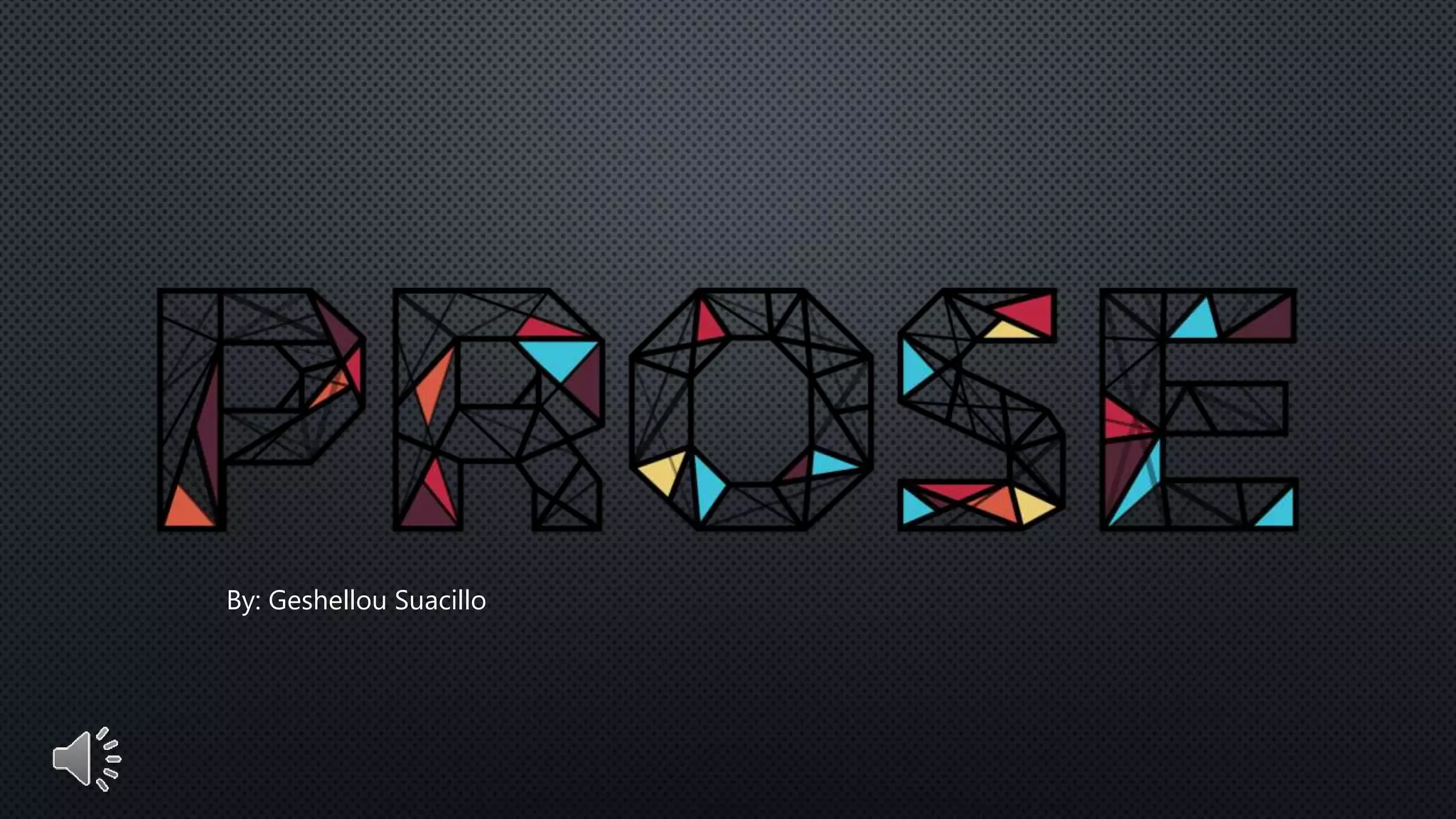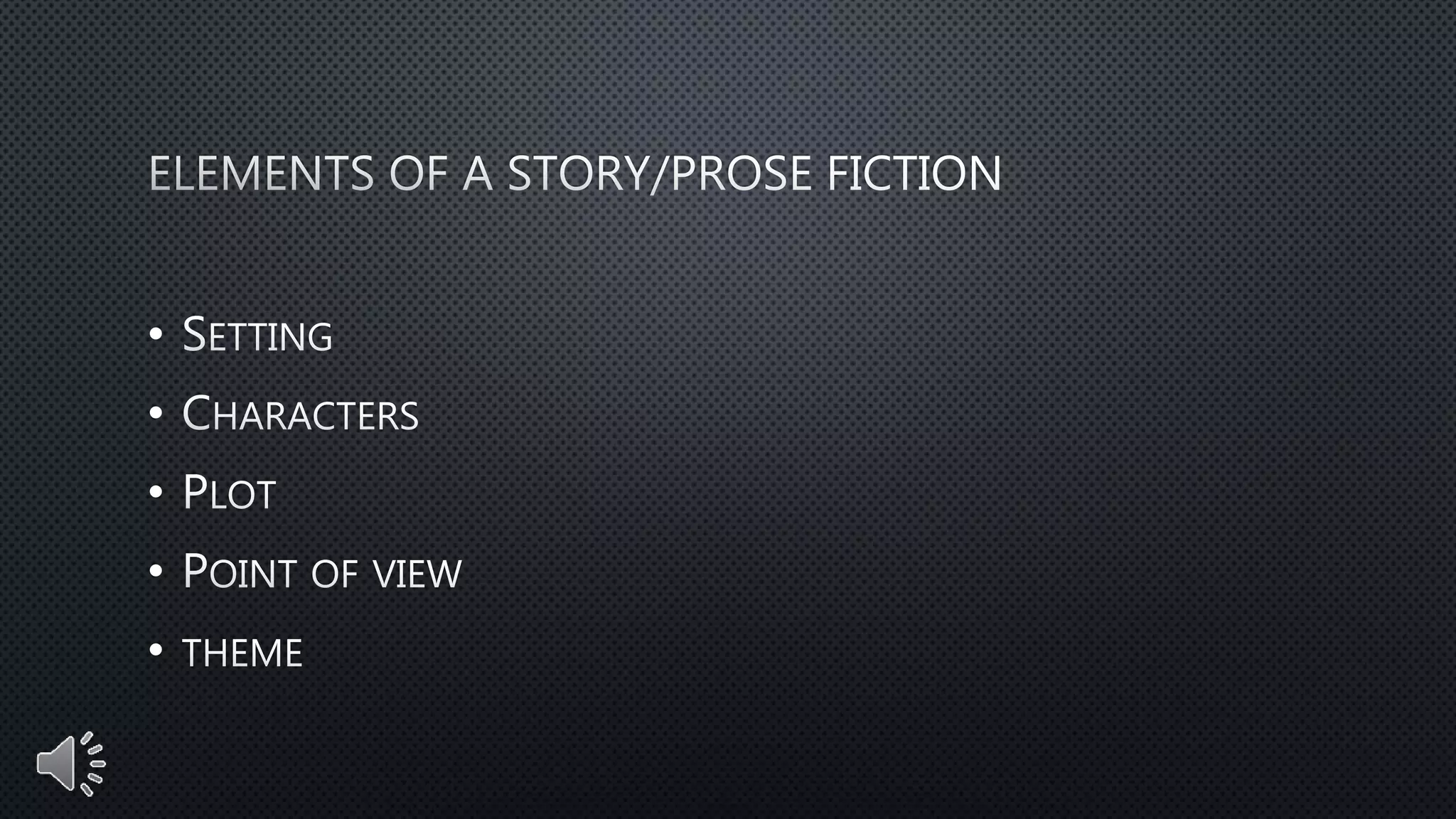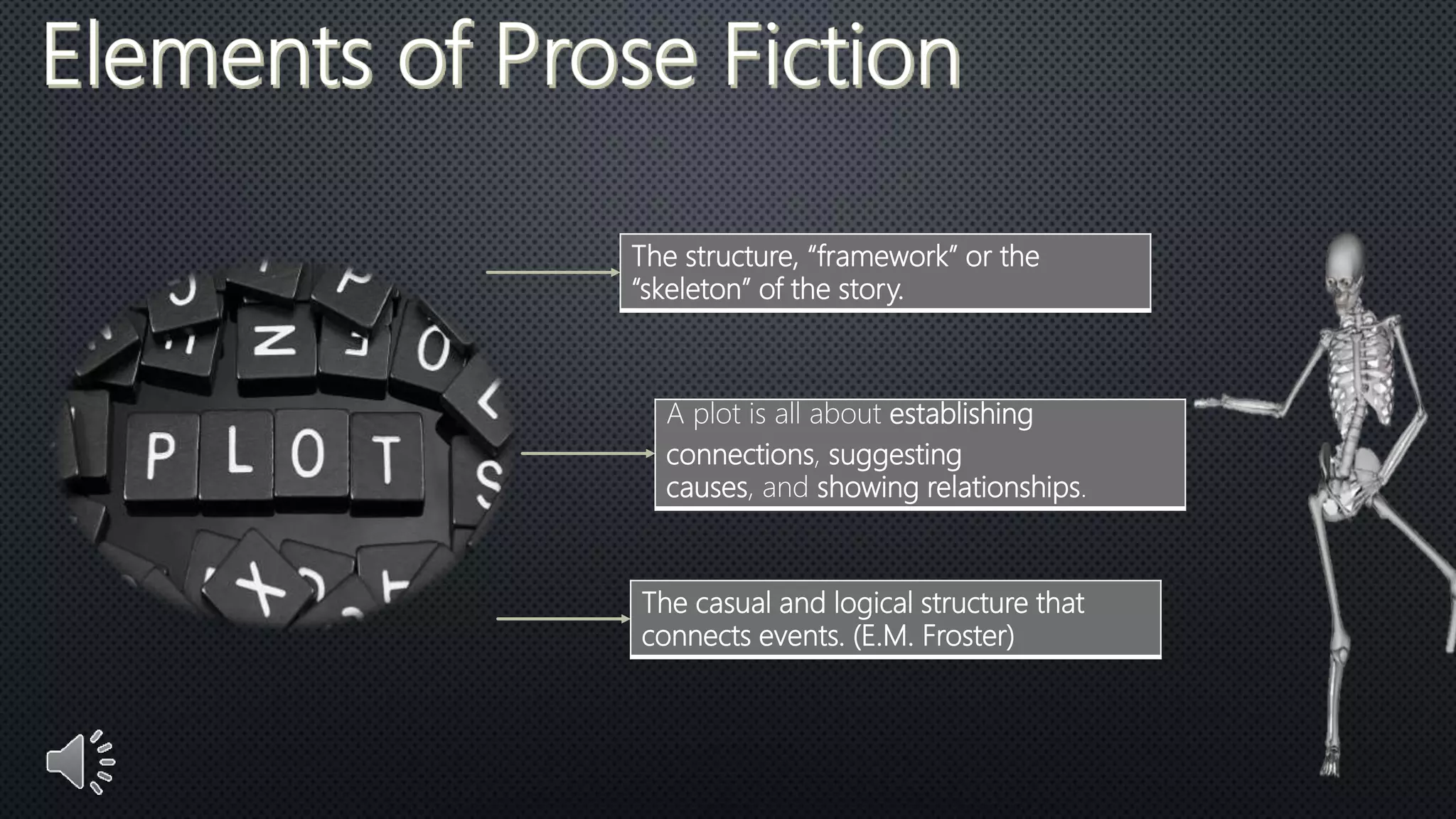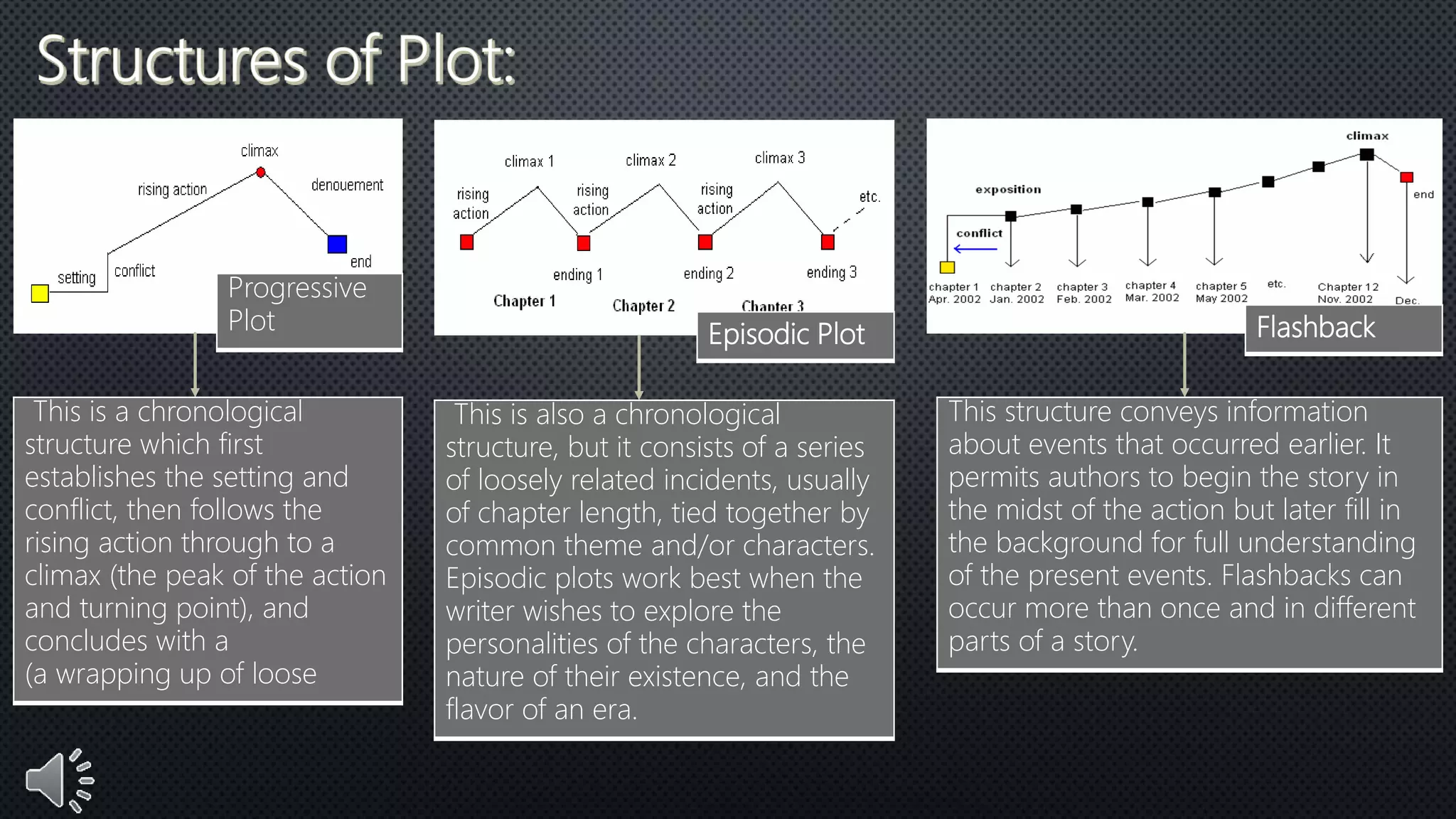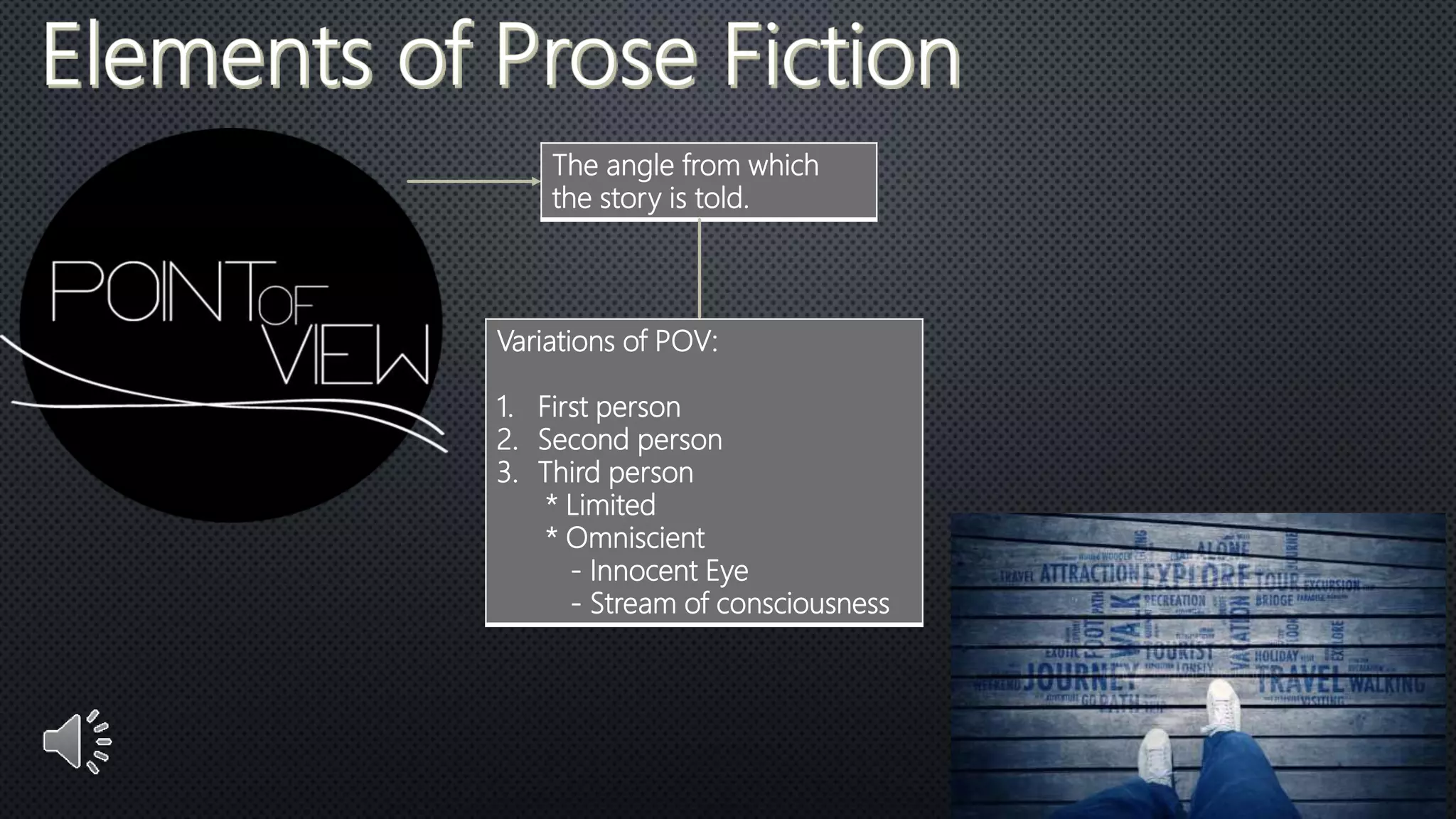This document defines and explains various literary elements and concepts in prose writing. It discusses different types of prose like short stories, novels, myths, and biographies. It also covers elements like setting, plot structure, character types, point of view, theme, and more. Key terms and concepts are defined, with examples provided to illustrate different types within each element.
